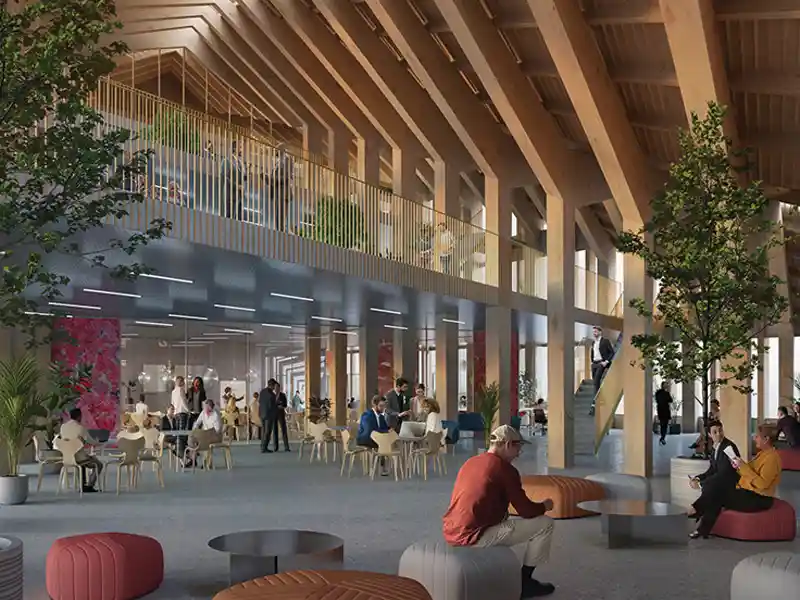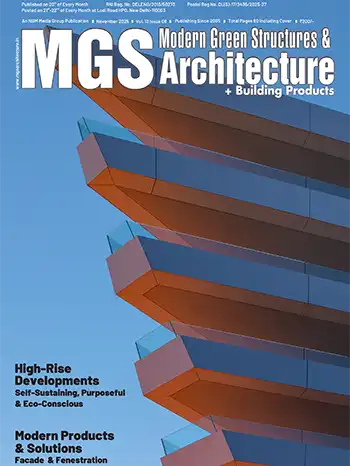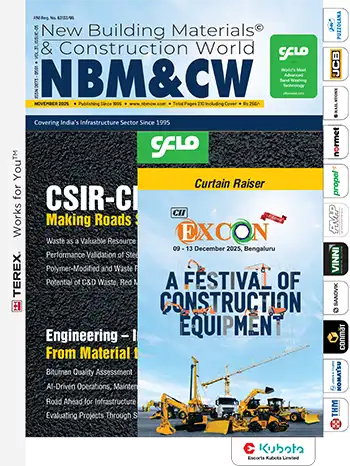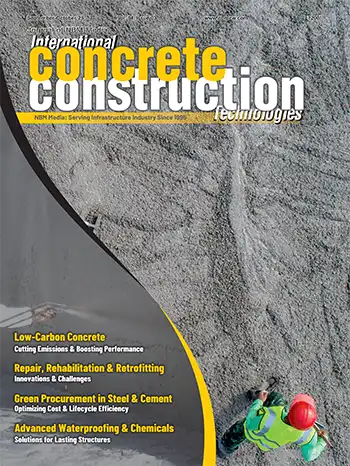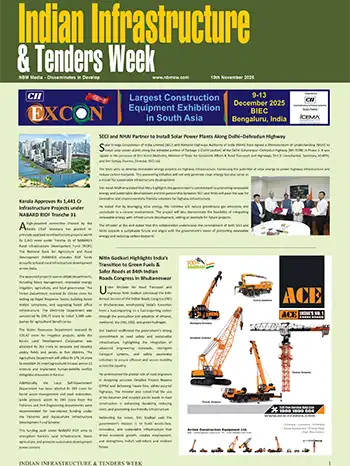M. Anand - Deputy Executive Director, CII Indian Green Building Council
The real estate industry is one of the largest contributors to global greenhouse gas (GHG) emissions, consuming significant amounts of raw materials and producing substantial waste. In response to growing environmental concerns and the need for sustainable development, the concept of a circular economy has gained prominence in recent years. Circular economy principles, when applied to construction and green building practices, provide innovative solutions to reduce waste, conserve resources, and promote sustainability.
 CII GREEN Business Centre, Hyderabad
CII GREEN Business Centre, HyderabadUnderstanding Circular Economy in Construction
A circular economy is an economic model that seeks to minimize waste and maximize resource efficiency. This model encourages the continuous use of materials, extending their lifecycle and ensuring that they are reused, refurbished, and recycled. In the context of construction, it aims to decouple economic growth from the consumption of raw materials.Circular economy principles can be applied at various stages of a building’s lifecycle, including design, construction, operation, and demolition. By focusing on reducing waste, improving resource efficiency, and creating buildings that are adaptable, flexible, and capable of being disassembled, the construction industry can significantly reduce its environmental footprint.
By designing buildings for durability, flexibility, and disassembly, optimizing resource use, and integrating recycled materials, the construction sector can become more sustainable: waste will be minimized, and valuable resources will be preserved for generations to come.
M. Anand
Principles of Circular Economy in Construction
The principles of circular economy in construction emphasize sustainability, resource efficiency, and waste reduction. One key aspect is designing buildings for durability and longevity, which ensures they have longer life spans and require fewer repairs or replacements. This reduces the environmental impact by limiting the need for new materials and minimizing waste overtime. Additionally, designing for disassembly and flexibility allows buildings to be easily deconstructed at the end of their life, making it easier to reuse valuable materials like steel, aluminium, timber, cement, and concrete, further reducing the demand for added resources.Material efficiency and resource optimization are central to the circular economy, aiming to minimize waste and maximize the reuse of materials throughout the construction process. Techniques such as prefabrication, modular construction, and advanced manufacturing can reduce material usage and waste, making construction more resource efficient.
Reusing and recycling materials from demolished or refurbished buildings also plays a critical role, as it reduces the environmental impact of new material extraction and lowers construction costs by incorporating salvaged resources like reclaimed wood and steel. Recycled materials, such as concrete or asphalt, further contribute to this circular approach, closing the loop on construction waste.
Incorporating sustainable energy use is another important principle of circular construction. The focus should be on reducing energy demand to its minimum through efficient technologies and materials and then integrate renewable energy sources like solar panels, wind turbines, and geothermal systems, helping buildings reduce their reliance on non-renewable energy and lower carbon emissions.
Energy-efficient designs that optimize natural lighting, heating, and cooling further decrease energy consumption, contributing to long-term sustainability. Together, these principles form a comprehensive approach to building design and construction that prioritizes longevity, resource conservation, and environmental responsibility.
 International Tech Park Chennai – Radial Road
International Tech Park Chennai – Radial RoadGreen Building Practices
Green building practices aim to minimize the environmental impact of construction by using sustainable materials, resource efficient technologies, and environmentally responsible building designs. These practices focus on reducing resource consumption, minimizing waste, and enhancing the overall quality of indoor environments for occupants.IGBC has been a key player in promoting sustainable building practices in India. IGBC’s green building rating systems’ criteria include energy efficiency, water conservation, sustainable site development, and the use of green materials. The Council currently has over 15,410 projects adopting IGBC green and net zero ratings in India, which accounts for more than 13.26 billion square feet of registered green building footprint.
Incorporating circular economy principles into green building practices can significantly enhance the effectiveness of sustainable construction. By reducing waste and optimizing resource use, circular economy practices complement the goals of green building, creating buildings that are both environmentally responsible and economically viable.
Reducing Waste in Construction
Reducing waste in construction is a key pillar of the circular economy, and one of the most effective strategies is using recycled and reclaimed materials such as concrete, wood, glass, and metal from previous projects. IGBC strongly advocates minimizing waste generation and ensuring that leftover resources are repurposed instead of ending up in landfills.This approach not only reduces environmental impact but also conserves energy and optimizes resource use. For instance, broken brickbats can be used for roof weatherproofing, recycled concrete can be repurposed as aggregate for new mixes or to raise levels, and reclaimed wood can be transformed into interior finishes or structural elements. By embracing circular resource consumption, we can build a more sustainable and efficient future for the construction industry.
Modular and prefabricated construction methods also play a significant role in waste reduction. By manufacturing components off-site, these methods ensure that materials are precisely measured and cut, minimizing excess waste generated during construction. Modular construction allows for easier disassembly at the end of a building’s life, making it possible to reuse components and materials in future projects.
Another important strategy for waste reduction involves minimizing waste generation during the construction process itself. This can be achieved by optimizing material procurement, better site management, and the use of advanced technologies such as BIM, which allows construction teams to plan and manage resources more efficiently, reducing errors and material waste.
IGBC promotes waste segregation which helps create ecosystems that are closed loop where materials are returned to the supplier for refurbishment or reuse, further reducing waste and the need for new materials.
 Sobha City, Thrissur
Sobha City, ThrissurDriving Sustainability Through Eco-labelling
IGBC’s GreenPro is a Type-1 Ecolabel that empowers end users in the building and manufacturing sectors to choose sustainable products, materials, and technologies. By enabling responsible choices, GreenPro helps reduce environmental impact throughout the construction, operation, and maintenance phases of buildings and factories.Accredited by the Global Ecolabelling Network (GEN) through the GENICES (GEN’s Internationally Coordinated Ecolabelling System), GreenPro is a globally recognized mark of sustainability. Products carrying the GreenPro Ecolabel are designed to have a lower environmental footprint and significantly enhance the performance of Green Buildings and Green Companies.
The certification follows a lifecycle approach, assessing a product’s impact from raw material sourcing to manufacturing, usage, and disposal. By providing transparent sustainability information, GreenPro steers businesses and consumers toward environmentally responsible purchasing decisions, fostering a greener future.
Today, GreenPro has certified over 10,720 Green Products from 500+ companies across 39 categories under its eco-labelling standards. GreenPro is also integrated into 32 IGBC rating programs, encouraging stakeholders to build green and live greener.



